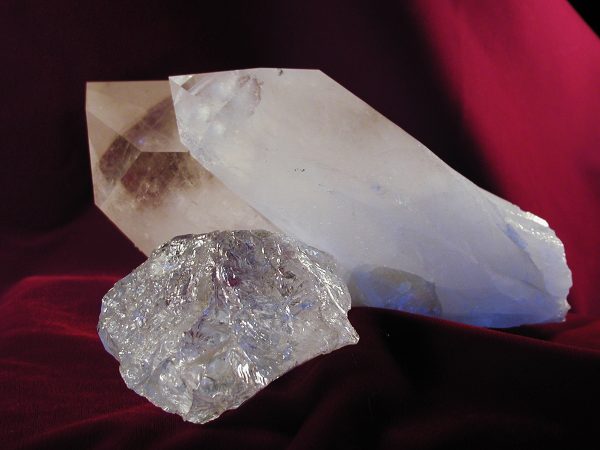
Quartz is one of the most widely distributed minerals on the earth’s surface. There are many types and different names, which makes many people confused. Today we will take a look at what types of quartz there are? How to differentiate?
At present, the common industrial types of quartz deposits available for development and utilization mainly include: natural crystal, granite quartz, vein quartz, quartz sandstone, quartzite, pink quartz, natural quartz sand, natural micro-nano silica carbon ore, etc.
1. Natural crystal
Natural crystal is a large transparent quartz crystal mineral whose main component is silica. Crystals are mostly formed naturally in caves, rock cracks or joints, and faults, and their growth conditions are relatively harsh.
2. Granite Quartz
Granite quartz refers to the quartz in large-grained granite or granite pegmatite (white granite) formed due to magma consolidation and diagenesis. The quartz grade in this type of deposit is mostly around 25%, and mineral impurities mainly come from fluid inclusion-level lattice impurity elements in quartz particles.
3. Vein quartz
Vein quartz is mainly formed under the action of magma and hydrothermal fluids. It usually has a dense massive structure. Its mineral composition is single, almost all of which is quartz. The SiO2 content is generally above 99%. Vein quartz deposits are generally small in scale, steep in appearance, generally several meters to tens of meters thick, and generally tens to hundreds of meters in length. A mining area can be composed of one vein or multiple veins.
The reserve scale of vein quartz deposits is generally relatively small and the mining difficulty is relatively high. However, due to its low impurity content and stable resource quality, it is mostly used to prepare silica powder, low-iron quartz sand, optical glass, and semiconductors. and other high-quality quartz products.
4. Quartz sandstone
Quartz sandstone is a sandy sedimentary rock consolidated through sedimentation. Its quartz and siliciclastic content is generally >95%. The accessory minerals are mostly feldspar, mica and clay minerals, and the cement is generally siliceous. At present, quartz sandstone is distributed in all provinces in my country, among which areas such as Daguan, Yanjin, Yiliang in Yunnan and Muchuan in Sichuan are rich in resources.
Quartz sandstone deposits generally have large scales, stable geological conditions, and good mining conditions. At the same time, the hardness of ore is generally relatively low, the natural particle size is moderate, and it is easy to crush, classify and large-scale industrial production. However, due to the complex composition of quartz sandstone cement, it is usually used in the production of daily glass sand, glass fiber, metallic silicon, refractory materials, silica, organic silicon and other fields.
5. Quartzite
Quartzite is usually a metamorphic rock formed by regional metamorphism or thermal contact metamorphism of quartz sandstone or other siliceous rocks. In addition to feldspar, mica and clay minerals, the associated minerals often also contain trace amounts of tourmaline and hematite. and zircon, etc. Compared with quartz sandstone, quartzite ore is denser and harder. Our country is very rich in quartzite resources and has a large amount of development and utilization, mainly distributed in areas such as Fengyang, Anhui.
Quartzite deposits have the advantages of large scale, stable geological conditions, and good mining conditions. The ores are generally dense and uniform with good lumpiness. They are more suitable for daily glass sand, float glass sand, glass fiber, metallic silicon, refractory materials, Products in traditional application fields such as quartz plates with a SiO2 content of about 99% are mass-produced industrially.
6. Pink quartz
Pink quartz is usually a sedimentary weathered deposit formed by the weathering and disintegration of siliceous parent rock under special geological structural conditions (warm and humid paleoclimate, gentle paleogeography, hydraulic effects, etc.). The natural particle size is 5~50μm. Quartz The content is usually 95%~98%, and some can be as high as 99% or more.
7. Natural quartz sand
Natural quartz sand is a sandy quartz mineral raw material with quartz as the main mineral component formed by long-term weathering of mother rocks such as granite, quartzite, quartz sandstone and vein quartz in nature. Its associated minerals include feldspar, rock debris, Mica, clay minerals and heavy minerals such as zircon, tourmaline, ilmenite and hornblende are mainly marine sedimentary sand deposits and fluvial and lacustrine sedimentary sand deposits.
This type of deposit is generally large in scale. Its main advantage is that it usually has a natural moderate particle size and angle factor, and is easy to mine. It is an ideal raw material for processing quartz sand products for casting. However, the disadvantage of this type of deposit is that there are relatively many impurities. If the impurities are fully removed, it can be used All quartz products are processed with SiO2 content around 99%.
8. Natural micro-nano silica carbonite
The ore-bearing rock is composed of light gray to gray-black phytolith rock, which is formed by the accumulation and consolidation of a large number of phytoliths. It contains no sporopollen and very few diatoms. It was formed in the middle Eocene to early Miocene warm temperatures. Deposition in the warm lake environment.
Silicon-carbon ore is mainly composed of micron-nano-sized quartz and fixed carbon, with a small amount of other impurities; the SiO2 content is 65% to 85%, fixed carbon is 9% to 20%, and silicon and carbon minerals have porous structures. Through ultra-fine grinding and sorting of silicon carbon ores, the yield of micron-sized quartz can be 49.7%, with a SiO2 content of 99.95%. The yield of nano-sized quartz with a particle size of 80 to 200nm can reach 25%, and the yield of micron-sized carbon can be obtained. 30%. Phytolith can be directly used to prepare rubber reinforcing fillers, high-hard silicon carbide, sewage treatment and conductive materials through wet physical sorting; through ore mineral processing separation and purification tests, mesoporous silicon, mesoporous carbon, and white carbon black can be obtained , nano-silica powder and other materials, their industrial value is extremely high.
